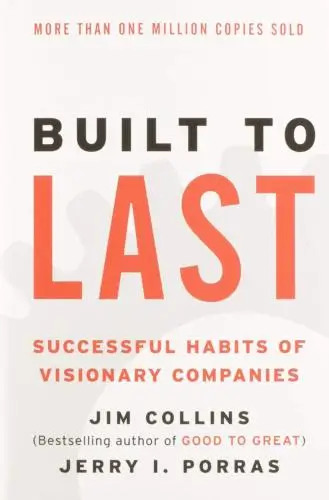
Built to Last
Successful Habits of Visionary Companies
What's it about?
Built to Last delves into what makes certain companies stand the test of time. Through extensive research, Collins identifies key principles that successful companies like 3M and Procter & Gamble share, such as visionary leadership and a commitment to core values. This book is essential reading for anyone looking to create a lasting legacy in the business world.
About the Author
Jim Collins is a renowned author and management guru whose works have become a beacon of inspiration for business enthusiasts worldwide. With his crisp and insightful writing style, Collins delves deep into the realms of leadership, strategy, and organizational excellence. His groundbreaking book "Good to Great" is a masterpiece that unravels the secrets of transforming good companies into extraordinary ones, backed by extensive research and captivating storytelling. Collins takes readers on a voyage through the triumphs and failures of various corporations, offering profound perspectives on humility, discipline, and unwavering commitment. In "Built to Last," he explores the enduring qualities that define visionary companies, igniting a spark of inspiration within readers to cultivate greatness. Collins' unique approach combines rigorous analysis with real-world anecdotes, empowering leaders to navigate the complexities of business with unwavering determination. His works resonate with a wide audience, provoking profound introspection and encouraging readers to strive for excellence in all aspects of life. Whether you're a seasoned CEO or an aspiring entrepreneur, Jim Collins' books are a treasure trove of wisdom that will propel you towards achieving greatness.
10 Key Ideas of Built to Last
Embrace a Core Ideology to Guide Long-term Success
A core ideology defines the enduring character of an organization - its self-identity that remains consistent through time and beyond market or technological changes.
This ideology provides a solid foundation upon which all decisions are made, ensuring that the company remains true to its values and purpose even as it adapts and grows.
It acts as a north star, guiding the organization through challenges and changes, and helps in attracting and retaining employees who share the same values, thereby fostering a strong, unified corporate culture.
Learn DeeperDefine Your Core Values and Purpose: Start by identifying what truly matters to you or your organization. What principles do you stand for, and what is your ultimate purpose beyond making money? This could involve brainstorming sessions, reflecting on moments of pride and achievement, and considering the legacy you want to leave.
Communicate Your Core Ideology: Once you have a clear understanding of your core ideology, make sure it's communicated effectively throughout your organization or personal life. This could mean incorporating it into your mission statement, discussing it in meetings, or even displaying it prominently in your workspace.
Align Decisions with Your Core Ideology: Before making any significant decision, ask yourself if it aligns with your core values and purpose. This applies to everything from strategic business moves to daily personal choices. It ensures consistency and integrity in all you do.
Evaluate and Adapt Without Losing Sight of Your Core Ideology: Regularly assess how well you're living up to your core ideology. Be open to making changes in your approach or strategies, but always ensure that these adaptations don't compromise your fundamental values and purpose.
- Example
A tech startup focuses on innovation and user privacy as its core values. Despite market pressure to monetize user data, the company decides against it to stay true to its core ideology, eventually gaining a loyal customer base that values privacy.
- Example
An individual identifies personal growth and helping others as their core values. They choose a career in social work, despite the potential for higher earnings in other fields, and volunteer regularly, ensuring their career and personal actions align with their core ideology.
Set Big Hairy Audacious Goals (BHAGs) to Stimulate Progress
BHAGs are ambitious long-term goals that are clear, compelling, and seemingly unattainable.
They serve to inspire and motivate employees by challenging them to stretch beyond their current capabilities and achieve extraordinary results.
BHAGs act as focal points for efforts, encouraging innovation and fostering a sense of accomplishment once they are achieved.
This approach helps companies to not just grow, but leap forward in their development and impact.
Learn DeeperIdentify Your BHAG: Start by brainstorming with your team or on your own. Think about where you want to see yourself or your company in the next 10 to 25 years. Make sure your goal is ambitious enough that it scares and excites you at the same time.
Make It Clear and Compelling: Once you have your BHAG, refine it to ensure it's understandable and motivating. It should be a clear call to action that everyone in your team or you personally can rally behind.
Create a Roadmap: Break down your BHAG into smaller, manageable milestones. This makes the journey less daunting and provides clear direction. Celebrate small wins along the way to keep motivation high.
Communicate and Embed Your BHAG: Share your BHAG with everyone involved. Make it a part of daily conversations, meetings, and decision-making processes. The more it's talked about, the more ingrained it will become in your or your team's actions.
Review and Adapt: Regularly review your progress towards your BHAG. Be open to adapting your approach based on what is and isn't working. Flexibility can be key to overcoming unforeseen challenges.
- Example
A small tech startup sets a BHAG to become the leading provider of AI solutions for healthcare within 20 years, revolutionizing patient care and treatment outcomes.
- Example
An individual in a mid-level management position sets a personal BHAG to become the CEO of a Fortune 500 company, focusing on sustainable and ethical business practices.
Cultivate the Genius of the 'AND' Over the Tyranny of the 'OR'
Rejecting the false dichotomy between two seemingly contradictory concepts (such as profitability and social responsibility) allows organizations to enjoy the benefits of both.
By embracing the 'AND', companies can become more adaptable and innovative, finding solutions that incorporate multiple objectives and thus achieving a more holistic form of success.
This mindset encourages a culture of creativity and flexibility, crucial for long-term sustainability and growth.
Learn DeeperEmbrace Complexity in Decision-Making: When faced with a decision that seems to force a choice between two desirable outcomes, challenge yourself to think creatively about how you might achieve both. For instance, if you're deciding between investing in employee training (to improve service quality) and cutting costs to keep prices competitive, consider ways to do both, such as implementing more efficient, cost-effective training methods.
Foster a Culture of 'AND' in Your Team or Organization: Encourage team members to bring forward solutions that address multiple goals simultaneously. This could involve setting up brainstorming sessions where the explicit goal is to find 'AND' solutions, not just compromises. Recognize and reward those who come up with innovative ideas that serve dual purposes.
Apply the 'AND' Philosophy to Personal Goals and Decisions: In your personal life, when you find yourself torn between two important goals (like saving money versus enjoying life now), look for ways to achieve both. This might mean finding budget-friendly ways to enjoy life or setting up a savings plan that still allows for small indulgences.
- Example
A company decides to implement a remote working policy, addressing the need for cost reduction (by decreasing office space) AND enhancing employee satisfaction and work-life balance.
- Example
A grocery store chain introduces a line of affordable, locally-sourced organic products, tackling the demand for low-cost groceries AND the growing consumer interest in sustainability and supporting local farmers.
Preserve the Core/Stimulate Progress
Balancing the preservation of core values and ideologies with the stimulation of progress and change is vital for enduring greatness.
While the core ideology provides stability and continuity, stimulating progress ensures relevance and vitality.
This balance prevents stagnation and promotes a dynamic, evolving organization capable of navigating the complexities of an ever-changing business landscape.
Learn DeeperIdentify Your Core Values: Start by clearly defining the core values and ideologies that are at the heart of your personal or professional life. These should be principles that you are unwilling to compromise on, regardless of the circumstances.
Set Progressive Goals: While keeping your core values in mind, set ambitious yet achievable goals that push you or your organization forward. These goals should challenge you to grow and adapt without compromising your foundational beliefs.
Regularly Review and Adapt: Make it a habit to periodically review both your core values and your progress goals. This ensures that your core remains relevant and that your goals continue to align with your evolving context and capabilities.
Encourage Open Dialogue: Foster an environment where feedback and new ideas are welcomed and valued. This will help stimulate progress by incorporating diverse perspectives and potentially innovative solutions.
Celebrate Milestones: Recognize and celebrate when you or your organization achieves a goal or makes significant progress. This reinforces the importance of both preserving the core and stimulating progress.
- Example
A technology company maintains its core value of 'innovation' by dedicating resources to research and development, while also adapting its product line to meet emerging market demands, ensuring they remain relevant and competitive.
- Example
A non-profit organization committed to 'community empowerment' might preserve this core ideology by consistently focusing on community-driven projects, but stimulate progress by adopting new fundraising strategies or technologies to increase their impact.
Seek Consistent Alignment
Ensuring that every aspect of the organization - from its processes and policies to its culture and products - aligns with its core ideology and strategic goals creates a coherent, unified entity.
This alignment maximizes efficiency, reduces internal friction, and enhances the organization's ability to achieve its objectives.
It also makes the company more resilient to external pressures and better positioned to capitalize on opportunities.
Learn DeeperIdentify Your Core Ideology: Start by clearly defining your organization's core values and purpose. This isn't just about what you do, but why you do it. Think of it as the guiding star for all decisions and actions within the company.
Conduct an Alignment Audit: Regularly review your business processes, policies, culture, and products to ensure they are in harmony with your core ideology. Look for discrepancies where actions and strategies may diverge from your foundational principles.
Implement Alignment Strategies: Once discrepancies are identified, take corrective action. This could involve adjusting policies, redefining roles, or even changing aspects of your organizational culture to ensure everything is pulling in the same direction.
Communicate Clearly and Often: Make sure everyone in the organization understands the core ideology and how their work contributes to the strategic goals. Regular communication helps reinforce the importance of alignment and keeps everyone focused on the collective mission.
Measure and Adjust: Establish metrics to gauge the effectiveness of your alignment efforts. Use these insights to make informed adjustments, ensuring continuous improvement and adaptation to new challenges or opportunities.
- Example
A tech startup realizes its rapid growth is leading to a dilution of its founding principles. To realign, it initiates 'core values workshops' for all employees, focusing on how each department can better embody these values in their daily work.
- Example
A retail chain discovers that its customer service policies are not in line with its core value of 'putting the customer first.' It overhauls its return policy to be more customer-friendly and trains staff extensively on customer engagement techniques, aligning actions with ideology.
Deeper knowledge. Personal growth. Unlocked.
Unlock this book's key ideas and 15M+ more. Learn with quick, impactful summaries.
Read Full SummarySign up and read for free!
Built to Last Summary: Common Questions
Experience Personalized Book Summaries, Today!
Discover a new way to gain knowledge, and save time.
Sign up for our 7-day trial now.
No Credit Card Needed

Similar Books

$100M Offers
Alex Hormozi
Principles of Marketing, Global Edition
Gary Armstrong
The 100 Best Business Books of All Time
Jack Covert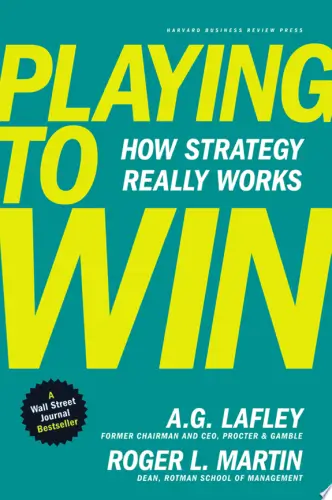
Playing to Win
A.G. Lafley
Productize
Eisha Armstrong
Start Your Own Pet-Sitting Business and More
Entrepreneur Press
The 22 Immutable Laws of Marketing
Al Ries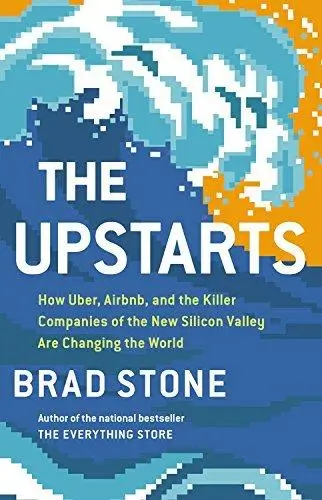
The Upstarts
Brad Stone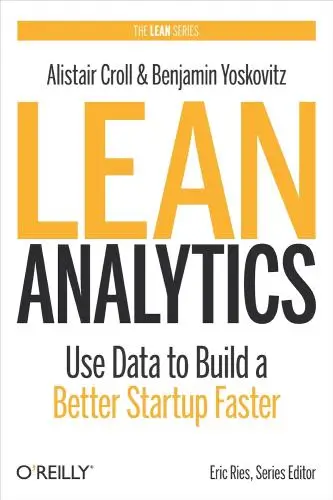
Lean Analytics
Alistair Croll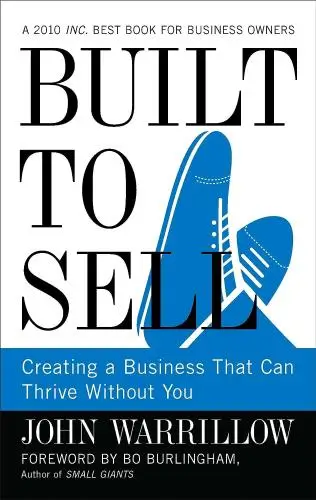
Built to Sell
John WarrillowTrending Summaries

Peak
Anders Ericsson
Never Split the Difference
Chris Voss
Smart Brevity
Jim VandeHei
The Psychology of Money
Morgan Housel
The First 90 Days
Michael D. Watkins
Atomic Habits
James Clear
Thinking, Fast and Slow
Daniel Kahneman
The Body Keeps the Score
Bessel van der Kolk M.D.
The Power of Regret
Daniel H. Pink
The Compound Effect
Darren HardyNew Books

The ^AOxford Handbook of Job Loss and Job Search
Ute-Christine Klehe PhD
Job Interviews For Dummies®
Joyce Lain Kennedy
Job Interviews In A Week
Alison Straw
Handbook of Career Development
Gideon Arulmani
The Art of Spending Money
Morgan Housel
$100M Offers
Alex Hormozi
A Candle for Kiri
Edna Mae Holm
Principles of Marketing, Global Edition
Gary Armstrong
Serpent Rising: The Kundalini Compendium
Neven Paar
